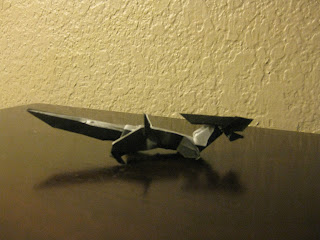More teeth, more scales, more fingers, more legs, more grid lines, more more more… origami is rapidly growing more and more complex. While origami’s development as a complex, intricate, mathematically precise craft, its development as an art is more difficult to spot. With an immense volume of models being published in books, magazines, and on the internet every year, innovative origami design techniques are constantly being created, yet the artistic identity of origami seems to be fairly static. For laymen, one origami artists’ style can be extremely difficult to distinguish from another.
Compared to a more mature art like painting, the origami scene lacks in diversity, recognition, and talent. Relatively speaking, origami has less diverse styles, is less recognized by the public, and has fewer talents that are recognized as masters than painting, sculpture, etc. At times, the focus on accuracy and complexity rather than expression makes one wonder, to what extent is origami an art rather than just a craft?
In answering this question, we must remember that origami is still extremely young.
Origami’s history as an art—as opposed to as a tradition—is fairly short. Until the 1950s with Akira Yoshizawa, origami was limited to cranes, boats, etc… what we now call “traditional models.” Compared to the millennia of history of painting, what origami has accomplished in less than a century is something to be proud of.
The rapid growth of origami in complexity is evidence of the youth of our art and community. We are still young; our artistic tradition is limited; we are still discovering the techniques of origami craft and design. Thus, our progress is expressed mostly in complexity. Picasso first had to first master traditional painting before developing the bold styles that we identify him with today. As origami as an art matures, we will see more unique artistic identities. More genuine masters will appear, and origami will gain recognition from outside of origami circles.
In fact, evidence of maturing style in origami can already be found. Meher McArthur’s book “New Expressions in Origami Art”, published 2017, features 25 very unique origami artists, including Joel Cooper’s masks, Vincent Floderer’s crumple folds, and Eric Joisel brilliantly expressive characters. Advertising and fashion have both frequently sought out origami for inspiration. Given time, origami will surely grow into a well recognized, well respected, diverse art form, that perhaps will rival even the world of painting.













































